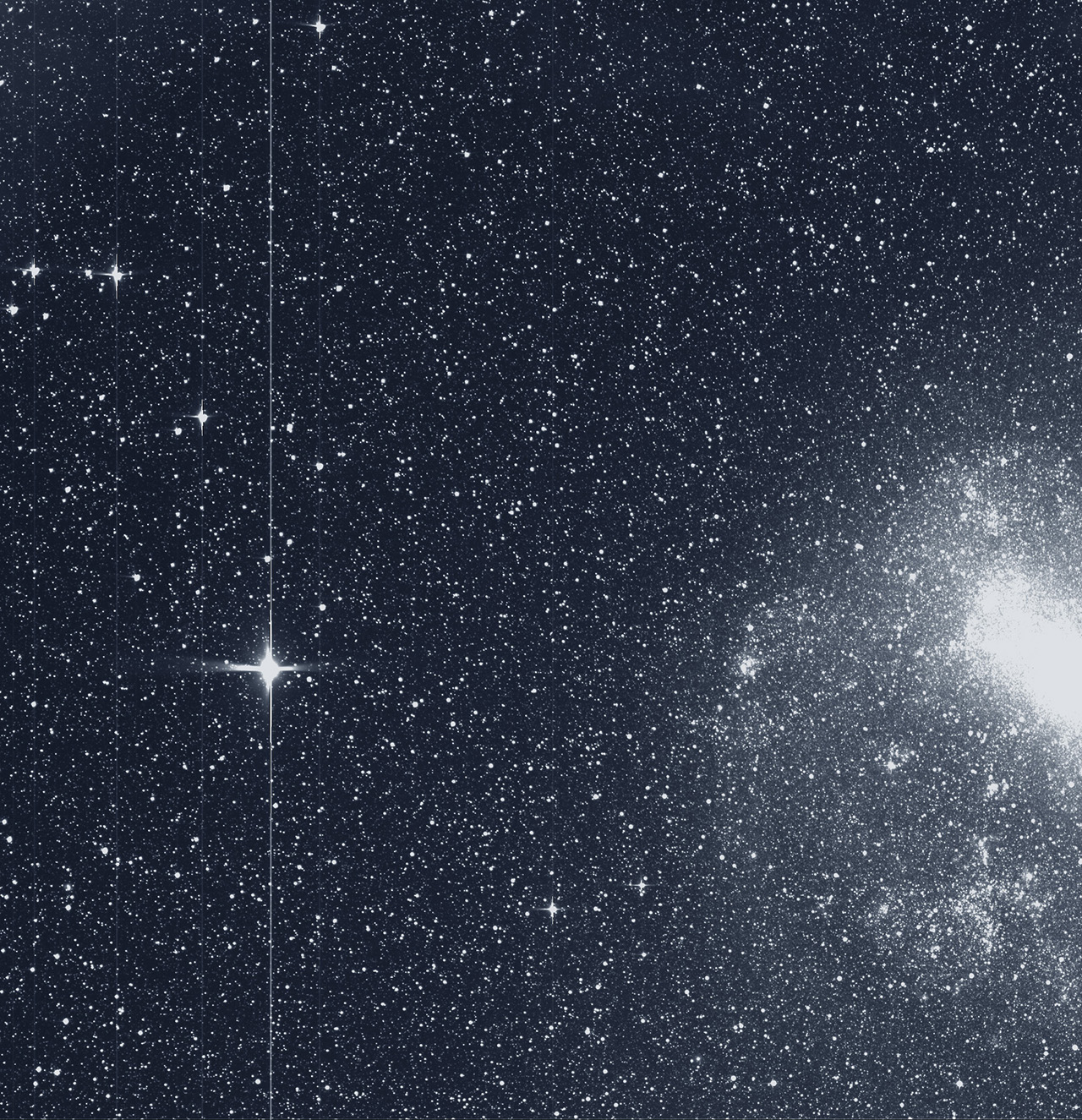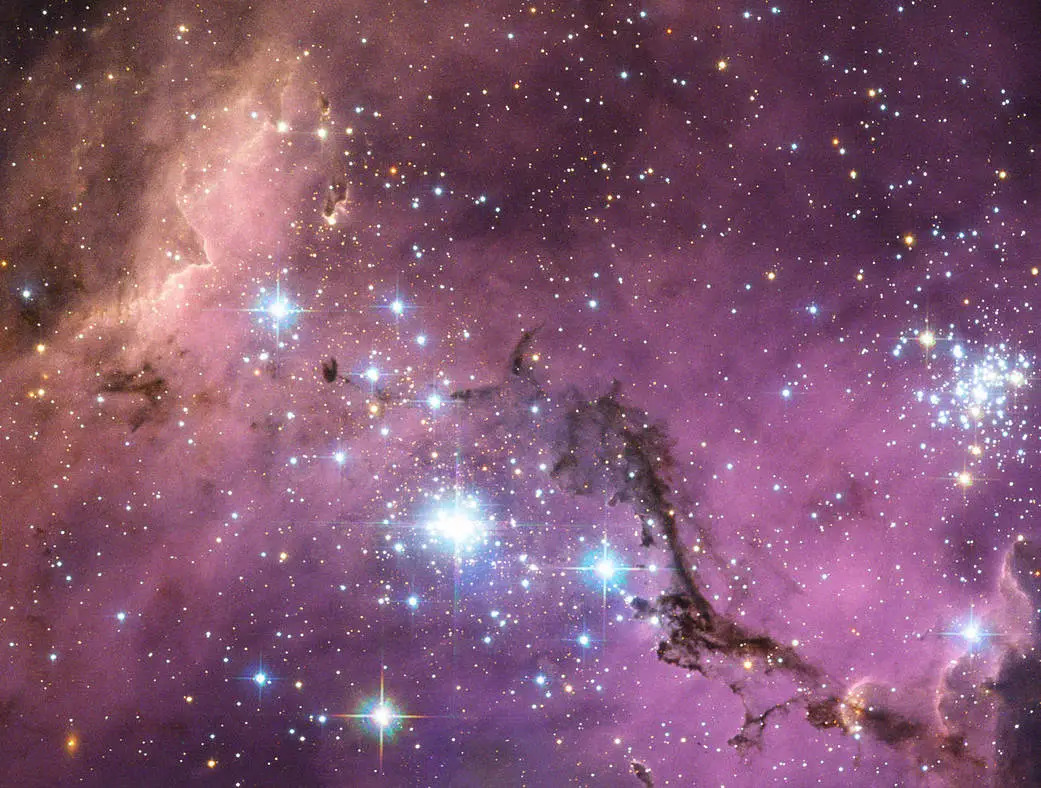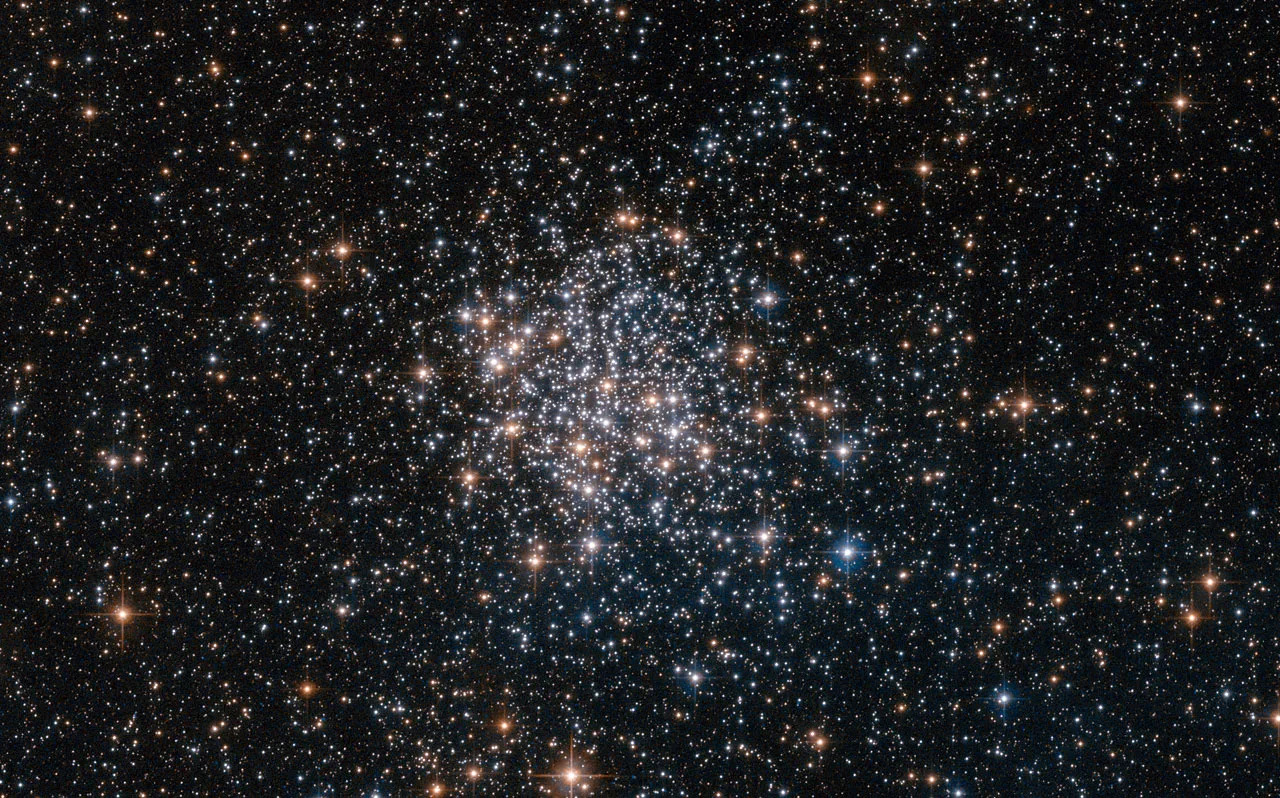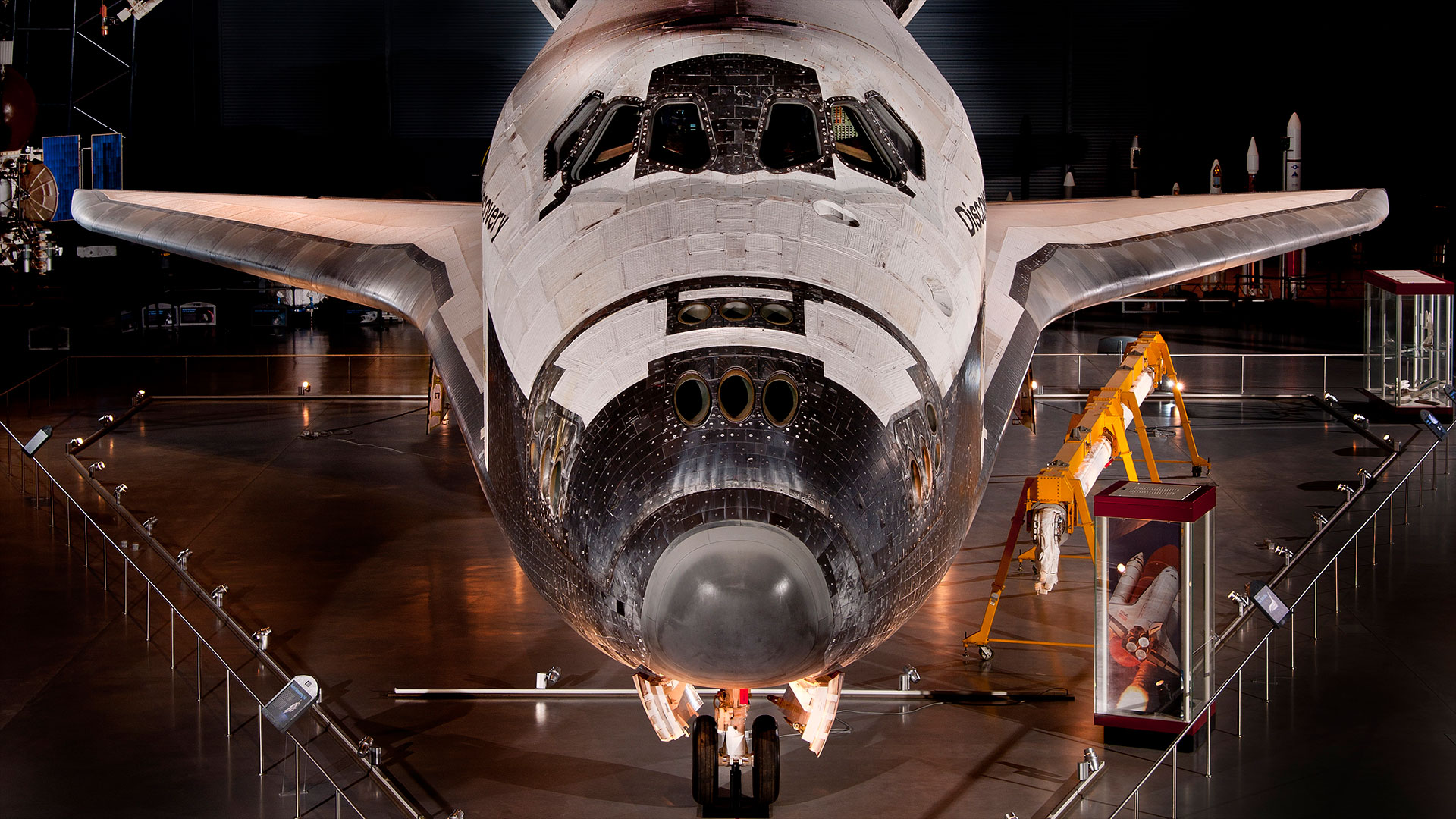What is the Large Magellanic Cloud?
Learn all about the Large Magellanic Cloud, including what it is, what it features and its relation to the Milky Way.
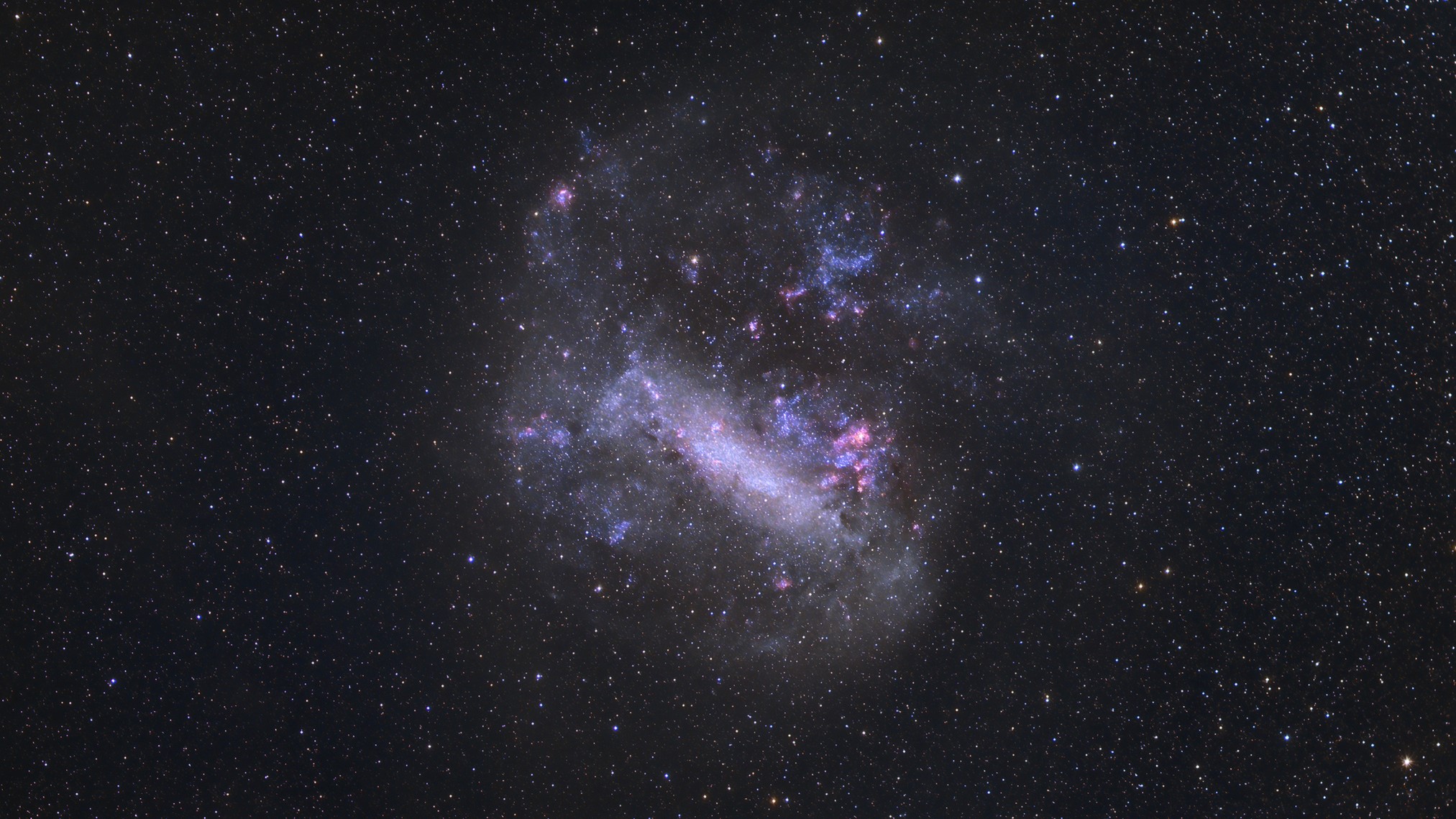
The Large Magellanic Cloud (LMC) is a dwarf galaxy that is close to the Milky Way.
The LMC and its neighbor, the Small Magellanic Cloud (SMC), are so close to our galaxy that we can easily see individual stars and nebulas within them. In 1987, the last supernova to be seen with the naked eye exploded in the LMC.
Despite their relative proximity to us, the Magellanic Clouds remain full of mystery.
Large Magellanic Cloud FAQs
How do the Magellanic Clouds appear from Earth?
The Magellanic Clouds are a pair of dwarf galaxies that are close enough to our galaxy for observers in the Southern Hemisphere to see them as hazy clouds of stars with their unaided eyes.
Where is the Large Magellanic Cloud?
The Large Magellanic Cloud is located 161,663.4 light-years away. From our point of view on Earth, it is so large that it spans two constellations: Mensa (the Table) and Dorado (the Swordfish). Stargazers in Australia, New Zealand, southern Africa and South America get great views of the Magellanic Clouds, but they are too far south to be seen in the Northern Hemisphere.
What is the Large Magellanic Cloud an example of?
The Large Magellanic Cloud is considered a dwarf galaxy. It was once thought to be a satellite galaxy of the Milky Way, or a very small galaxy that buzzes around our galaxy. Around five dozen satellite galaxies are currently known, but it turns out that the LMC is not one of them; it's visiting us for the first time.
How did the Large Magellanic Cloud get its name?
Although the Magellanic Clouds are clearly visible to the naked eye as hazy patches of light in the Southern Hemisphere sky, they are always below the horizon in the Northern Hemisphere. So, when the early-16th-century Portuguese explorer Ferdinand Magellan set out with his fleet of five ships to circumnavigate the world, he and his fellow seamen were shocked to see the clouds rise above the horizon as they sailed into the southern Pacific.
The clouds have been named after Magellan ever since, but he didn't "discover" them; they have been known to the Indigenous populations of the Southern Hemisphere since antiquity. Given Magellan's checkered history, in which he enslaved and murdered Indigenous people, there have been calls for the Magellanic Clouds to be renamed, perhaps to the "Large and Small Meridional Clouds," meaning "southern clouds," or the "Large and Small Milky Clouds," so astronomers could keep using the acronyms LMC and SMC. However, any name changes would have to be ratified by the International Astronomical Union.
How far away is the Large Magellanic Cloud?
Using Cepheid variable stars, researchers calculated the distance to the Large Magellanic Cloud to be 49.59 kiloparsecs, plus or minus 0.54 kiloparsecs. A parsec is 3.26 light-years, so a kiloparsec is 3,260 light-years. Therefore, the LMC is 161,663.4 light-years away, give or take 1,760.4 light-years.
That's a long way, but let's put it into context. The most distant globular clusters belonging to the Milky Way, such as NGC 2419, are as far as 300,000 light-years away, while the distance to the nearest spiral galaxy, the Andromeda galaxy, is 798 kiloparsecs (2.6 million light-years), according to research published in the journal Monthly Notices of the Royal Astronomical Society.
Breaking space news, the latest updates on rocket launches, skywatching events and more!
What kind of galaxy is the Large Magellanic Cloud?
The Large Magellanic Cloud is a dwarf irregular galaxy, although it shows signs of once having spiral arms. It has an off-center bar running through the middle of it. One disrupted spiral arm continues to protrude disjointedly from the bar.
The spiral arms may have been wrecked by gravitational interactions either with our Milky Way galaxy and its dark matter halo or from the LMC's close neighbor, the Small Magellanic Cloud. Evidence for these interactions comes in the form of the Magellanic Stream, a filament of gas that links the Milky Way with the Magellanic Clouds, and the Magellanic Bridge, another river of gas that joins the LMC and the SMC. The LMC's bar is thought to have formed more than 2 billion years ago.
Astronomers have used data from the VISTA survey of the Magellanic Clouds on the Visible and Infrared Survey Telescope for Astronomy at the European Southern Observatory's Paranal Observatory in Chile to measure the elongated orbits of the stars that form the bar. Such bars are common in galaxies — even the Milky Way has a small bar — and they are thought to form when a spiral disk is perturbed and stars are sent from having more circular orbits to more elliptical paths.
The diameter of the LMC is 9.96 kiloparsecs, or 32,469.6 light-years, according to the NASA/IPAC Extragalactic Database, or about one-third the diameter of the Milky Way. That makes it the fourth-largest galaxy in our Local Group of galaxies, after Andromeda, the Milky Way and the Triangulum Galaxy. The mass of the LMC is about 25 billion solar masses, which is around 10% to 20% the mass of our galaxy.
Stars and nebulas of the LMC
The LMC is full of many of the types of objects we find in our own galaxy. Among its many stars are 60 globular clusters and 700 open clusters. It also features some huge star-forming regions — most notably, 30 Doradus, popularly known as the Tarantula Nebula.
To give a sense of how impressive the Tarantula Nebula is, consider this: If it were as close to us as the Orion Nebula is (about 1,300 light-years), the Tarantula Nebula would appear in our night sky as large as 60 full moons and would be so bright as to cast shadows.
At the heart of the Tarantula Nebula is a huge star cluster called NGC 2070, which contains many massive stars, including R136a1, possibly the most massive star known. Its mass is about 315 times that of the sun, although estimates vary. IIt shines 6 million times brighter than the sun does.
Another massive star in the LMC was Sanduleak -69° 202, which was a blue supergiant star that went supernova on Feb. 24, 1987, and was bright enough to be seen with the naked eye. Named SN 1987A, it is the closest and youngest supernova to us and is, therefore, important enough for ground- and space-based telescopes to have been keeping a close eye on it to better understand the immediate aftermath of a supernova explosion.
Does the Large Magellanic Cloud orbit the Milky Way?
For many years, astronomers wondered whether the Magellanic Clouds are orbiting the Milky Way or whether they are just passing through and making their first close encounter with our galaxy.
In 2007, they determined that both the Large Magellanic Cloud and the Small Magellanic Cloud are first-time visitors. Measurements of the velocities of both Magellanic Clouds through space show them to be surprisingly high — too fast to be gravitationally bound to the Milky Way. From these velocities, a team of astronomers led by Gurtina Besla, previously of the Harvard-Smithsonian Center for Astrophysics and now at the University of Arizona's Steward Observatory, calculated the hyperbolic paths of the Magellanic Clouds past the Milky Way.
However, the unbound nature of the Magellanic Clouds leads to some complications. Star formation in the Magellanic Clouds seems to have proceeded in bursts. Astronomers had thought these bursts coincided with repeated close passes to the Milky Way, but that can't be possible if they are visiting for the first time. One possible alternative explanation is that the Magellanic Clouds experienced bursts of star formation when they interacted with each other while tumbling through intergalactic space.
The Magellanic Stream was also thought to have formed during previous close orbits, but again, astronomers must seek another explanation.
It seems that there are still many secrets to be revealed and stories to be told about our nearest galactic neighbor. Until we have those answers, just marvel at how lucky we are that these galaxies are passing so close just as humans happen to be alive.
Large Magellanic Cloud expert Q&A
Space.com asked astronomer Gurtina Besla — an assistant professor in the Department of Astronomy at the University of Arizona (UA), an associate astronomer at UA's Steward Observatory, and an expert on the Magellanic Clouds — about the past and future of these intriguing galaxies.
If the Magellanic Clouds are first-time visitors to this neck of the woods, where did they come from?
It is believed that the Clouds formed in a similar location as the Milky Way and the Andromeda galaxy, but they are simply on a much-longer-period orbit. In other words, the Clouds formed nearby at the earliest times in the universe (when galaxies were first forming). They then traveled away from the Milky Way and Andromeda and have come back only recently.
The Magellanic Stream is a river of gas that links the Magellanic Clouds to our galaxy. How did it form?
One of the arguments my team has made is that it is plausible to form the Stream through interactions between the LMC and SMC, coupled with hydrodynamic processes that removed gas from both galaxies as they recently fell into the Milky Way. We have shown how both of these processes can act without the need for repeated orbits about the Milky Way. Bursts of star formation can be attributed to close encounters between the Clouds as well, but more work needs to be done on this topic.
How common are midsize galaxies such as the Magellanic Clouds?
Gas-rich, star-forming midsize/smallish galaxies like the Clouds are actually really common in more isolated regions. In the Local Volume (within 30 million parsecs, or about 100 million light-years or so), they are the most common type of star-forming galaxy. This class of galaxy also dominates the population of star-bursting galaxies in the Local Volume, so that's not weird. The LMC is not currently star bursting — its star formation rate is increasing, but we define a "starburst" as happening when a galaxy's star formation rate is more than three times their average star formation rate, which isn't the case for the LMC. It might be for the SMC, though.
What is rare and weird is the probability of having two such galaxies (gas-rich and rapidly star-forming) both so close together and so close to a large galaxy like the Milky Way. That is very, very rare. Less than 2% of Milky Way analogs in large-volume cosmological simulations or in large galaxy surveys have an SMC- and LMC-type galaxy in orbit around a Milky Way-type galaxy. In observations, those examples are usually also gas-poor and no longer forming as many stars as the Clouds. If you also require that the SMC and LMC be close together in addition to being near a Milky Way analog, you pretty much get zero cases. So we are seeing the Clouds in a very rare configuration that is not likely to last for very long.
Additional resources
The European Space Agency's Gaia mission has the most detailed astrometric data about the Magellanic Clouds to date for understanding the stellar dynamics of the LMC and inferring its history.
Stargazers might like to try the venerable Webb Deep-Sky Society's Visual Atlas of the Magellanic Clouds, which is a guide to deep-sky objects such as emission nebulae, planetary nebulae, dark nebulae and star clusters in the Magellanic Clouds.
To keep up to date with the latest research and news about the Magellanic Clouds, sign up to follow the Magellanic Clouds Newsletter, which is produced by astronomers at Keele University in the U.K.
Bibliography
G. Pietrzyński et al; ‘A Distance to the Large Magellanic Cloud That is Precise to One Per Cent', Nature, 567, 200–203, 13 March 2019, https://www.nature.com/articles/s41586-019-0999-4
Flavio Fusi-Pecci and Gisella Clementini; ‘Encyclopedia of Astronomy and Astrophysics', 2001, https://sites.astro.caltech.edu/~george/ay20/eaa-globcl.pdf
Michael A. Beasley, Katja Fahrion and Anastasia Gvozdenkọ; ‘Measuring Distances to Galaxies with Globular Cluster Velocity Dispersions', Monthly Notices of the Royal Astronomical Society, 527, 5767–5775, 3 January 2024, https://academic.oup.com/mnras/article/527/3/5767/7424997
‘Magellanic Clouds ― Irregular Dwarf Galaxies', European Southern Observatory, 3 December 2009, https://www.eso.org/public/images/b01/
HongSheng Zhao and N. Wyn Evans; ‘The So-called "Bar" in the Large Magellanic Cloud', The Astrophysical Journal, 545, 28 November 2000, https://iopscience.iop.org/article/10.1086/317324
David L. Nidever et al; ‘The Origin of the Magellan Stream and its Leading Arm', The Astrophysical Journal, 679, 432–459, 20 May 2008, https://iopscience.iop.org/article/10.1086/587042/pdf
Jason Harris; ‘The Magellanic Bridge: The Nearest Purely Tidal Stellar Population', The Astrophysical Journal, 658, 2007, https://iopscience.iop.org/article/10.1086/511816/meta
T. Ruiz-Lara et al; ‘The Large Magellanic Cloud stellar content with SMASH', Astronomy & Astrophysics, 639, 9 July 2020, https://www.aanda.org/articles/aa/full_html/2020/07/aa38392-20/aa38392-20.html
‘The VISTA near-infrared YJKs survey of the Magellanic System', University of Hertfordshire, 30 August 2022, https://star.herts.ac.uk/~mcioni/vmc/
Florian Niederhofer et al; ‘The VMC survey – XLVI. Stellar proper motions in the centre of the Large Magellanic Cloud', Monthly Notices of the Royal Astronomical Society, 512, 5423–5439, 14 April 2022 https://academic.oup.com/mnras/article/512/4/5423/6554251
‘Stellar motions reveal backbone of the Large Magellanic Cloud', Leibniz-Institut für Astrophysik Potsdam, 29 March 2022, https://www.aip.de/en/news/stellar-motions-reveal-backbone-of-the-large-magellanic-cloud/
NED – NASA/IPAC Extragalactic Database, https://ned.ipac.caltech.edu/byname?objname=Large+Magellanic+Cloud&hconst=67.8&omegam=0.308&omegav=0.692&wmap=4&corr_z=1
Eugene Vasiliev; ‘The Effect of the LMC on the Milky Way System', Galaxies – Special Issue: Galactic Structure and Dynamics, 18 April 2023 https://www.mdpi.com/2075-4434/11/2/59
‘The stars of the Large Magellanic Cloud', European Space Agency/Hubble, 20 June 2016, https://esahubble.org/images/potw1625a/
‘Neighbor Galaxy Caught Stealing Stars', NOIRLab, 18 July 2011 https://noirlab.edu/public/es/news/noao1102/?nocache=true
Paul Crowther, R136a1 Frequently Asked Questions, University of Sheffield, https://pacrowther.sites.sheffield.ac.uk/r136a1-faqs
Gurtina Besla et al; ‘Are the Magellanic Clouds on Their First Passage about the Milky Way?', The Astrophysical Journal, 668, 2007 https://iopscience.iop.org/article/10.1086/521385
‘The Magellanic Clouds are First-Time Visitors', Harvard–Smithsonian CfA, 16 September 2007, https://www.cfa.harvard.edu/news/magellanic-clouds-are-first-time-visitors
‘It's never too late to get active' Sloan Digital Sky Survey, 8 January 2019, https://press.sdss.org/its-never-too-late-to-get-active/

Keith Cooper is a freelance science journalist and editor in the United Kingdom, and has a degree in physics and astrophysics from the University of Manchester. He's the author of "The Contact Paradox: Challenging Our Assumptions in the Search for Extraterrestrial Intelligence" (Bloomsbury Sigma, 2020) and has written articles on astronomy, space, physics and astrobiology for a multitude of magazines and websites.

